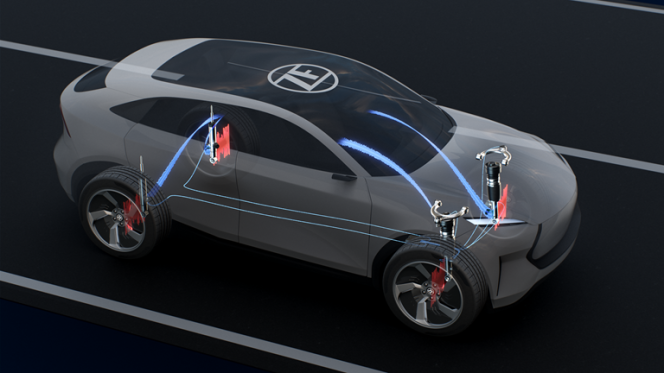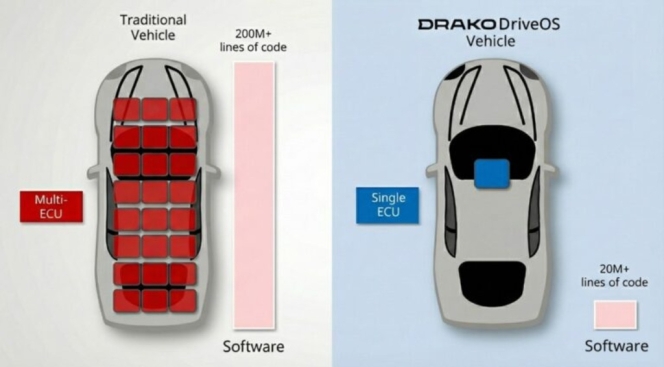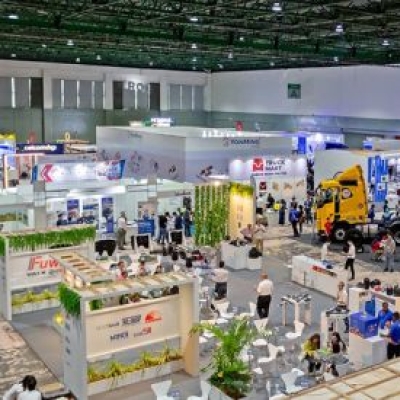- Ansys Software Private Limited
- Engineering Simulation Software
- High-Performance Computing
- HPC
- Data Centre
Ansys Inaugurates Data Centre-3 In Pune
- By MT Bureau
- October 12, 2024
Ansys Software Private Limited, a leading engineering simulation software company, has opened its newest high-performance computing (HPC) data centre, DC-3, at its Pune office. With this launch, Ansys Pune now operates three on-premises data centres equipped with advanced HPC cluster facilities.
The inauguration was done by Neeraj Mathur and Ulkesh Desai, President and Vice President of Space Society of Mechanical Engineers (SSME), SAC-ISRO. This facility is expected to enable advanced technical simulations, boost Ansys' computing capabilities and spur innovation while advancing India's technological development and Ansys' worldwide operations. It will also be crucial in bolstering the business's capacity to cater to clients in industries like healthcare, aerospace and automobiles.
Ansys' newest data centre, DC-3, expands its HPC infrastructure by complementing the existing DC-2 and DC-2, which are now running at full capacity with over 8,000 cores. It is designed to accommodate over 10,000 cores. An initial expenditure of over INR 200 million has been undertaken to install 1,700 cores. Future goals include increasing GPU capability to accommodate GPU simulations, which aligns with Ansys' intentional move of Fluent, their CFD program, to native GPU technology. The business has installed around 70 GPU cores to facilitate GPU simulations, with plans to extend this capability in future phases.
Neeraj Mathur, President, Space Society of Mechanical Engineers (SSME), SAC-ISRO, said, "HPC is at the core of present-day innovations, particularly in areas like aerospace and simulation-driven engineering. It is promising to see Ansys’ sustained investment in India’s HPC infrastructure, and it will play an important role in empowering engineers and researchers of the country to solve today’s increasingly complex engineering challenges. In addition, this will also enhance the country's technological advancement."
Ulkesh Desai, Vice President, Space Society of Mechanical Engineers (SSME), SAC-ISRO, said, "Focused on GPU technology, DC-3 is poised to push innovation while staying ahead of emerging technology trends. It will play a significant role in both driving groundbreaking innovation and aligning with today’s changing landscape of emerging technologies. This launch by Ansys also emphasises how the company is creating a platform for future exploration and discovery.
Mike Yeager, Area Vice President, India and Japan, Ansys, said, "The launch of DC-3 in Pune further highlights Ansys’ commitment to cultivating innovation through advanced, state-of-the-art technology. This expansion is not just about increasing computational power, but it is also about enabling Ansys’ teams and customers to push the boundaries of the possibilities in engineering simulation. We are also very excited to see how DC-3 will accelerate simulations, particularly with the integration of GPU technology, and empower our engineers to explore new frontiers in product development."
Murali Pullela, Director of Sales, Ansys, added, "Over the years, Ansys has always been dedicated to empowering our customers with cutting-edge simulation technology. The DC-3 launch in Pune will further this by leveraging the immense capabilities of GPU technology as it will enable faster, more accurate simulations. This launch highlights Ansys’ pledge to deliver the best-in-class solutions.”
Ather Energy’s New Subsidiary To Focus On Auto Insurance Business
- By MT Bureau
- December 19, 2025

Bengaluru-based electric vehicle maker Ather Energy has confirmed its plans to enter the auto insurance services space by incorporating a wholly-owned subsidiary that will operate as a Corporate Agent.
The move is part of the EV maker’s plans to owmake nership experience more seamless, by providing auto insurance policies, in partnership with multiple insurers. This will also provide a recurring revenue stream by leveraging its existing user base.
Ather Energy also aims to innovative around EV-specific insurance products, simplify renewals and also improve attach rates over time.
Ravneet Singh Phokela, Chief Business Officer, Ather Energy, said, “We have always believed that a good ownership experience goes beyond the vehicle itself. Insurance is a critical part of that journey today, and it’s an area where the experience can be made significantly simpler and more predictable for customers. By bringing insurance distribution closer to the Ather ecosystem, we can make it simpler, more transparent, and better aligned with how our customers actually use their vehicles. Over time, this also gives us the ability to work with partners to design auto insurance products that reflect real EV usage, rather than adapting legacy frameworks. This is a measured but deliberate step, focused on strengthening the ownership experience while building a capability that complements our core offering and scales with the business.”
The EV maker stated that this move is a natural extension, as it can utilise its large customer base, which equates to no additional customer acquisition cost.
Ather Energy stated that entering the auto insurance space is part of its larger EV ecosystem building mission, which goes beyond just selling products, charging infrastructure, servicing and accessories among others.
Exicom Launches Exciom One EV Charging Rollout Solution
- By MT Bureau
- December 18, 2025

Exicom Tele-Systems has introduced Exicom One, a solution for the construction and operation of electric vehicle charging infrastructure. The service handles site surveys, electrical setup, software, operations and maintenance.
The launch coincides with the expansion of charging networks by Charge Point Operators (CPOs) in India. These organisations plan to deploy chargers, including DC units, by 2030.
The solution provides a framework for infrastructure deployment by combining hardware and software. The company is providing end-to-end support right from site assessment & planning for pre-installation, to civil works, electrical integration and hardware setup for deployment. It also provides AI-driven management, diagnostics and maintenance to support the EV charging operations.
Exicom One manages the orchestration of firmware and software. The platform allows businesses to monitor and optimise stations in real time.
The company recently partnered with an EV manufacturer to install charging stations along highway corridors and at traffic points. The infrastructure is designed to integrate renewable energy systems and Vehicle-to-Grid (V2G) applications.
The service also utilises Harmony Connect, an AI platform for predictive maintenance.
Anant Nahata, Managing Director and CEO, Exicom, said, “India’s EV story will only move as fast as the infrastructure behind it. While hardware innovation gets most of the attention, it is execution on the ground that truly defines success. Exicom One is built to remove that friction by bringing every piece of the puzzle together under one accountable partner. It is a smarter, faster way for CPOs and fleets to scale with confidence and focus on what really matters: delivering reliable charging experiences.”
ZF To Present Software Active Noise Reduction For Vehicle Chassis At CES
- By MT Bureau
- December 17, 2025

German tier 1 supplier ZF is presenting a new ‘Active Noise Reduction’ software function for vehicle chassis at the Consumer Electronics Show (CES) 2026. The purely software-based function reduces in-vehicle tyre noise transmitted through chassis components without requiring additional hardware. The company plans to expand the use of the function to other ZF chassis actuators in the future.
The solution uses ZF’s Smart Chassis Sensor with an integrated acceleration sensor to measure vibrations from the tyres. A developed algorithm recognises the characteristic noise patterns of tyre cavity noise around 200 hertz.
The software generates a counter-signal via ZF’s cubiX software through the valves of semi-active dampers (CDC). The function uses micro-movements of the damper to specifically reduce noise interference without impairing the damper function.
The technology achieves noise reductions of more than 3 dB, with future potential for up to 10 dB. This software-based noise reduction is achieved without additional installation costs or space requirements. Active Noise Reduction can be adapted to different vehicle types via software, opening a market for lower-priced vehicles.
Dr. Peter Holdmann, Member of the ZF Board of Management and Head of Division Chassis Solutions, said, “Active Noise Reduction is an excellent example of how we use smart algorithms to make ZF components even more efficient. This gives our semi-active CDC dampers a clear unique selling point in the market and sets new standards in comfort – without the need for any additional noise dampening hardware.”
Series production is scheduled to start in 2028. In the future, the function may be used in other ZF actuators, such as for active reduction of brake squeal.
Holdmann added, “Thanks to our system expertise, we are able to offer our mechatronic actuators as true innovation drivers with the help of smart algorithms and we will extend our software-based control approach to other ZF actuators in the future. The goal for us is clear: mechatronic actuators that are capable of efficiently reducing both their own and external noise with the help of software.”
The new function fits into ZF’s Chassis 2.0 product strategy, which uses intelligent and networkable actuators to enable new chassis functions via software.
Holdmann noted: “With our Chassis 2.0, we are laying the foundation for the software-defined vehicle.”
Drako Tech Unveils DriveOS With Single-ECU Architecture
- By MT Bureau
- December 17, 2025

California-based Drako Tech has announced DriveOS with HyperSafety, an automotive operating system designed for single-Electronic Control Unit (ECU) operation. The platform consolidates vehicle subsystems, including control systems, ADAS and digital cockpit, into one unit to reduce costs and enable over-the-air (OTA) updates.
Launched in 2015 and utilised in Drako GTE and Drako Dragon vehicles, DriveOS supports internal combustion, electric and hybrid propulsion systems.
The HyperSafety system provides real-time performance via a single-ECU architecture. According to Drako Tech, the networking backbone facilitates communication four times faster than multi-ECU Time-Sensitive Networking (TSN) automotive Ethernet.
The architecture employs hardware isolation and redundancy to maintain operation during component failures. By using a reduced code footprint and hardware partitioning, the platform aims to limit attack surfaces for cyber security and streamline validation processes.
Industry Integration
Drako Tech provides development environments that run natively on DriveOS:
- Control Systems: Allows engineers to build vehicle controls from Simulink models.
- Digital Cockpit: A system for instrument clusters, navigation and multimedia.
- ADAS: A software foundation for driver assistance with low-latency control.
The platform addresses the complexity of multi-ECU architectures, which typically require separate units for functions such as seats, doors and thermal management. Drako Tech uses a separation kernel to run safety-critical systems alongside non-critical systems, such as infotainment, on the same ECU.
DriveOS introduces hard real-time capabilities to Linux without requiring kernel changes. This allows developers to use Linux libraries and tools for safety-critical systems.
Key features include:
- Performance: 108-microsecond end-to-end performance compared to 514 microseconds for TSN Ethernet.
- Consolidation: The ability to move functions onto a single PC architecture to reduce hardware mass and complexity.
- Redundancy: Hardware-backed isolation ensures faults in one subsystem do not affect driving functions.
- Cloud Integration: Real-time fleet management and diagnostics without creating access paths to control systems.
Dean Drako, CEO, Drako Tech, said, “Nearly half of the cost of new vehicles is tied up in software and electronics. Drako Tech now offers all OEMs worldwide – regardless of size or influence – a definitive leap in their ability to deliver exceptionally safe, connected, AI-enhanced vehicles, with massive cost advantages. We are the first to achieve the ultimate goal – a single-ECU, hard real-time operating system and unified electronics architecture with mixed criticality – while providing OEMs a flexible deployment path.”






Comments (0)
ADD COMMENT